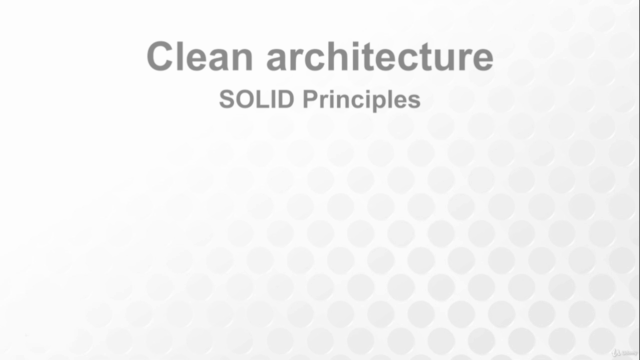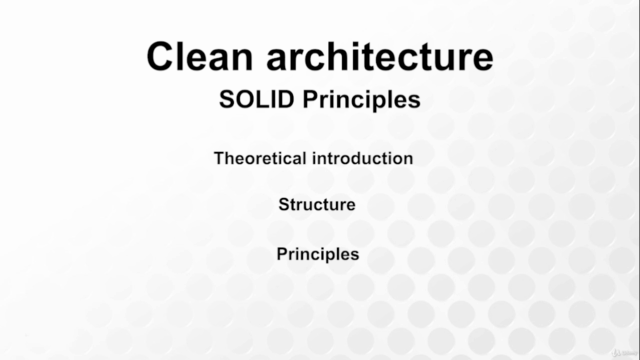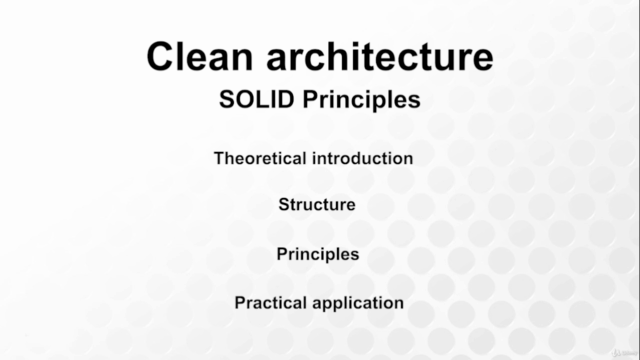Clean architecture & SOLID principles for Android in Kotlin

Why take this course?
🌟 Unlock the Secrets of Clean Architecture & SOLID Principles for Android Development 🌟
Your Journey to Mastering Modern Android Apps Starts Here!
Are you ready to elevate your Android development skills to the next level? With the advent of new technologies and libraries, the demand for developers who can implement Clean Architecture using SOLID principles and MVVM in Kotlin has never been higher. 🚀
Course Overview:
This comprehensive course is designed for developers who are serious about mastering the art of building robust, scalable, and maintainable Android applications. We'll dive deep into the principles that underpin high-quality software design and architecture. 🛠️✨
What You'll Learn:
✅ Clean Architecture: Understand the core concepts and the importance of separation of concerns in app development.
✅ Components & Layers: Discover how each layer within the architecture contributes to a well-organized, easy-to-maintain codebase.
✅ SOLID Principles: Learn the five fundamental principles that make software designs more understandable, flexible, and maintainable.
✅ MVVM (Model-View-ViewModel): Gain expertise in this architectural pattern that enhances your application's structure and testability.
✅ Practical Implementation: Follow a step-by-step guide to apply Clean architecture in a simple example app, complete with Jetpack Navigation, Room Database integration, and Dependency Injection.
Why This Course?
In this course, you'll:
- Get practical insights into applying modern principles and patterns in real-world scenarios.
- Understand the 'why' behind each concept, ensuring a solid grasp of the underlying principles.
- Learn how to build an app with a clean architecture from scratch.
- Explore the use of Room database for data persistence and Jetpack Navigation for seamless user experience.
- Master Dependency Injection to make your code more testable and easier to manage.
Who is this course for?
This course is ideal for:
- Android Developers who want to refine their skills with Clean Architecture.
- Kotlin enthusiasts looking to implement SOLID principles effectively.
- Aspiring developers aiming to build a strong foundation in modern Android app development.
Embark on Your Learning Path Today!
Don't miss the opportunity to transform your approach to Android development. By enrolling in this course, you'll join a community of professionals who are leading the charge in creating top-notch, high-performing apps. 📲💻
Sign up now and take your first step towards becoming an expert Android Developer! 🚀✨
Note: This course is designed to be hands-on and practical. It assumes you have a basic understanding of Android development with Kotlin. If you're just starting out, consider taking foundational courses in Android development before diving into this one. Let's build something beautiful and enduring together! 🛠️🎓
Course Gallery




Loading charts...
Comidoc Review
Our Verdict
This course provides a solid understanding of clean architecture and SOLID principles for Android development with Kotlin. Although outdated dependencies demand manual updates and some elements lack in-depth explanations, learners benefit from an example application and the instructor's clear instruction. To fully grasp every concept and ensure code quality, be prepared to research modern dependencies such as Hilt and Retrofit.
What We Liked
- Excellent for experienced Android developers looking for a refresher on clean architecture and SOLID principles.
- Covers all basic notions with a clear instructor, making it a good starting point for beginners.
- Real-world example application with clean architecture integrated with MVVM on Android.
- Inspires learners to explore more details about every SOLID concept and modern dependencies.
Potential Drawbacks
- Outdated dependencies such as Dagger, LiveData, and ViewModel require manual updates.
- Lacks in-depth explanation of certain elements and their relationships within the Clean Architecture.
- Sporadic errors discovered in code implementation may confuse some learners.
- Important topics like testing, UiStates classes, and proper use case naming are missing.